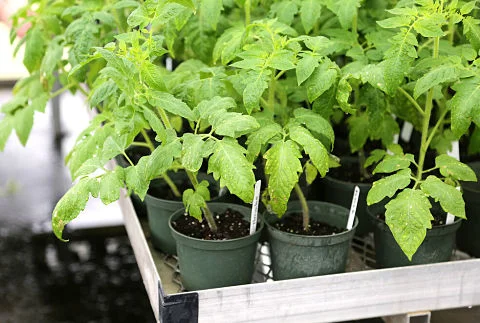Pick of the crop
/Garden centers are brimming with plants now. — Darrell G. Wolfe/Flickr
The garden centers are bustling now, luring in gardeners with an itch to plant something, anything -- maybe everything.
It's hard to resist those tender green sproutlings, some of them already breaking into bloom. Choose carefully, though, for best results in the garden. You want the sturdiest specimens with the best chance of thriving now and through the summer.
It's not a bad idea to cruise the garden centers, nurseries and greenhouse operations in your area, to get an idea of what's available and how it compares in price and quality before you plunk down money. Some centers are getting more innovative in their selections, and you may find unusual species or colors that may inspire new and better planting ideas than the ones you had in mind.
Here are some tips for choosing the best plants:
Color and flash attract the eye, but if you buy summer annuals already blooming in April, it's a safe bet that they've been coddled by greenhouse conditions. You don't want plants that are played out by June. Go for those that are more compact and not yet flowering; they'll establish themselves more readily.
Roots are really more important than flowers in young plants. Turn over the flats in bloom and you likely will see stringy roots, stifled for space in those tiny pots, poking out of drainage holes and growing around in circles in a desperate search for nutrients. It's difficult to get pot-bound plants like these out of their cell packs without damaging the root system.
Look for a well-developed plant with a stocky form and lots of branching stems. Plants that are leggy and flopping over may have been in undersized pots for too long or may have received inadequate light.
Examine foliage carefully, avoiding plants with browning, spotted or chewed-up leaves. You don't want to bring problems like bugs or fungus diseases home with you to infest your other plants. Fuzzy white stuff on stems could be a sign of mealybug trouble.
These healthy tomato seedlings should take right off. — UGA CAES Extension/Flickr
When buying perennials, generally sold individually in larger pots, look for new growth. Leaf color should be vibrant, not pale or browning around the edges.
Check plant labels to make sure you're getting what you expect; browsers often move plants around. The label — often a plastic marker that can be transferred to the garden -should clearly identify the species and variety. It also should offer cultural information, including whether the plant needs sun or shade, how tall it will grow and how far apart plants should be spaced.
Greenhouse-raised vegetable plants already are available. Tomatoes, peppers, lettuce cabbage and other cole crops transplant well and are a good buy. Cucumbers, squash, melons, beans and corn are sensitive to transplanting shock; many sources say you will get higher yields if you sow seeds directly into the garden.
When you get plants home, don't forget them and don't neglect them. Pinch off stringy stems and – yes – any flowers to promote new growth. It’s counter-intuitive to remove blossoms, but your plants will be quicker to establish themselves.
Keep your finds well-watered (but not soggy). Most New Jersey gardeners can expect to be clear of the possibility of killing frost by the first or second week in May, but keep an eye on the weather. Bring flats indoors if frost threatens.
Try to get plants in the ground as soon as weather permits. If you run into delays, you may have to move plants on from those tiny cell-packs to larger pots so their growth won't be stunted. When planting out, aim for a cloudy or rainy day to keep transplanting stress to a minimum. If the root balls are congested, gently break them apart before planting.
When you get plants in the ground, you can water them in with a weak solution of liquid fertilizer for an extra boost. Wait to fertilize at higher strengths until they are established; you don't want to promote leaf growth at the expense of root development.
Surround new plantings with a layer of mulch to suppress weeds and retain moisture. Then stand back and congratulate yourself for getting the growing season off to a good start.


